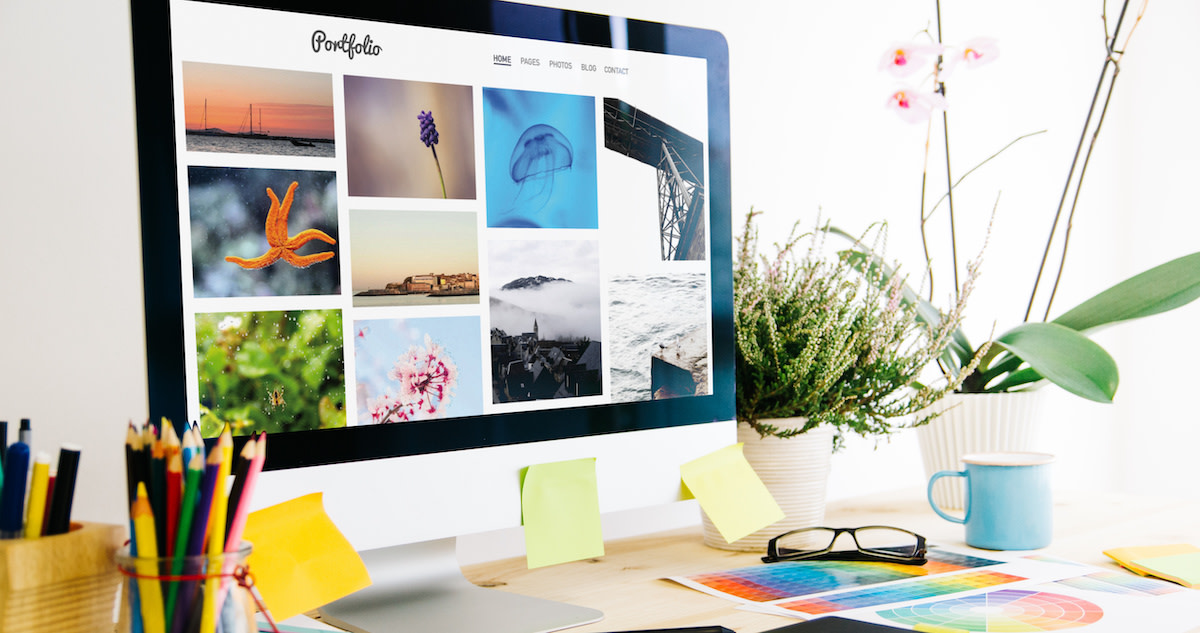How to Make a Digital Portfolio in 7 Steps
Written by MasterClass
Last updated: Nov 4, 2022 • 3 min read
No matter your occupation, creating a digital portfolio of your best work to show prospective employers increases your chances of landing your next job. Learn how to make a digital portfolio with a professional, engaging website that showcases your best work.
Learn From the Best
What Is a Digital Portfolio?
A digital portfolio is an online curation of your work experience, education, skills, work samples, and honors compiled on a portfolio website to obtain work from potential employers and recruiters. Your portfolio’s content includes your best work samples and functions as an additional source of information for hiring managers when you apply for a job. Many professionals use digital portfolios, including graphic designers, photographers, illustrators, and writers.
What to Include in a Digital Portfolio
What you include in your online portfolio website depends on your type of work. For example, creating a design portfolio differs from building a website for copywriting. Job seekers of all types generally include the following items:
- About me: This section briefly summarizes your background and past work. Present this biography in paragraph form on your home page to give potential clients an introduction to you and your employment experience.
- Accolades: This includes any honors, awards, grants, or other professional recognition you may have received as the result of your work.
- Contact information: You can create a link to your contact information or a contact form for potential employers to fill out directly from your website.
- Résumé: Include a list of your past work experience. You may include a list of your prior work, a downloadable résumé, or both.
- Skills: Though you may include your skills on your résumé, if your profession requires specific job-related skills (such as proficiency in particular software), you can create a unique section to list your relevant expertise.
- Work samples: Work samples comprise the main draw of your portfolio site, allowing recruiters to see your creative process. Depending on your profession, this section might include writing samples, case studies, artwork, or photography. Be sure to include any collaborators you’ve worked with on specific projects.
How to Create a Digital Portfolio
You can make a professional website building an easy, fun task that helps you get your next job. Follow this guide to build your digital portfolio:
- 1. Use a website builder. If you have limited experience building a website from scratch, consider using an online portfolio template or website builder made for beginners. These web design tools offer substantial multimedia customization and can save you a lot of time when creating your portfolio.
- 2. Choose your layout. You want an easy-to-navigate user experience for your website design. Create a visually appealing portfolio page layout that reflects your style, with eye-catching fonts, colors, and simple headings made for straightforward scrolling and clicking.
- 3. Choose your content. Your portfolio content should include a homepage with an About Me section and clickable headers or a table of contents. Include sections for your work experience, downloadable résumé, your best work samples, accolades, and a contact page.
- 4. Use search engine optimization (SEO). You can increase the likelihood that people will find your digital portfolio online by using industry keywords in your content. Make your website HTML-based so viewers can interact with your portfolio across various apps and web readers. Learn more about SEO strategy.
- 5. Link to your social media accounts. Once you’ve created your digital portfolio, link it to your social media accounts to increase online visibility. You may want to create professional social media accounts (as opposed to personal ones) to promote your work to new clients.
- 6. Link to job search engines. Expand your job search by connecting your digital portfolio to online job search websites and accounts.
- 7. Update frequently. Regularly creating new content for your digital portfolio and related social media accounts helps you keep up to date with recent trends in your field, eliminates outdated content after an extended period of time, and increases user engagement.
Want to Learn More About Tapping Into Your Graphic Design Genius?
Get a MasterClass Annual Membership and let David Carson be your personal tutor. The prolific and decorated designer—who’s been lauded as the “art director of the era”—reveals his processes for going off the (design) grid, implementing typography in new and interesting ways, innovative uses of photography and collage, and so much more.
